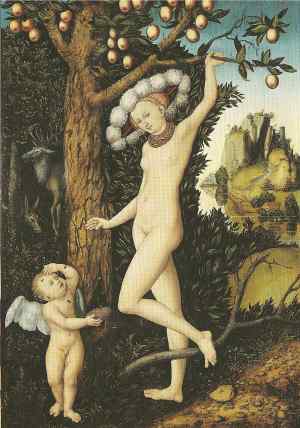(We all know that the novel as it begins is only fiction, but is the author really trying to make his readers believe that his female protagonist is mainly a "man"? Can his masculine Greek grammar keep her out of the human race of men and women? Has a god (a male) stopped her from looking like the equally-divine goddesses and gods?
Let's read the original, the transliteration of those Greek letters, an ESV-Bible-like translation, and an Ann-Nyland-like translation. Then you decide.)Ἑρμοκράτης ὁ Συρακοσίων στρατηγός, οὗτος ὁ νικήσας Ἀθηναίους, εἶχε θυγατέρα Καλλιρόην τοὔνομα, θαυμαστόν τι χρῆμα παρθένου καὶ ἄγαλμα τῆς ὅλης Σικελίας. ἦν γὰρ τὸ κάλλος οὐκ ἀνθρώπινον ἀλλὰ θεῖον, οὐδὲ Νηρηΐδος ἢ Νύμφης τῶν ὀρειῶν ἀλλ’ αὐτῆς Ἀφροδίτης Παρθένου.
----the "original"
Hermokrátēs ho Syrakosíōn stratēgós, hoṹtos ho nikēsas Ảthēnaíous, eĭche thugatéra Kalliróēn toửnoma, thaumastón ti chrễma parthénou kai ảgalma tēs hólēs Sikelías. ḕn gàr tò kállos oủk ảnthrōpinon ảllả theĭon, oủdè Nērēḯdos ḕ Númphēs tṍn ỏreiṍn ảll' aủtễs Ảphrodítēs Parthénou.
----a transliteration of the sounds of the original
Hermocrates, ruler of Syracuse, victor over the Athenians, had a daughter named Callirhoe, a marvelous virgin and the delight of the whole of Sicily. However, the beauty was not a man's but was a god's, not that of a Nereid or a Nymph on the mountain but of the Virgin Aphrodite herself.
----an ESV-like translation
Hermocrates, ruler of Syracuse, victor over the Athenians, had a daughter named Beauty, an amazingly eligible bachelorette and the delight of the whole of Sicily. Her beauty, in fact, was not merely human but was rather divine; not merely the beauty of a daughter of Nereus or even the beauty of a Nymph on the mountain but rather the beauty of Aphrodite, the Most Marriable Bachelorette Herself.
----an Ann Nyland-like translation
(This image reminds me somehow of the Genesis story of the very human Eve and Adam in the garden. Of course, it's a painting of the divine Aphrodite and Eros. I found the image at Nicos Stylianou's igreekmythology.com. He provides this information.
Name:"Aphrodite and Eros"
Museum:National Gallery, London, England
Artist and Year:Lucas Cranach Sr.,ca. 1430
Theme: Aphrodite talks with her son Eros, who has been stung by bees.)
------
Related posts:
- Mike's Coming Back to English Generics
- Alan's D. A. Carson on ανηρ and some of thoughts concerning Translation Theory
- Peter's The value of women, oxen and cows
- Alan's Semantic Range and Gender Inclusive Language: A Few Examples (ανηρ)
- Suzanne's Anthropos in the Peshitta
- Joel's How Much Meaning Do You Want?
- Joel's The Curious Case of the Withered Hand: A Translation Dilemma
- Suzanne's enter anthropos, the woman
- Joel's On Anthropos: Men, Women, and People
- Peter's The value of men, women and sheep
- A. Admin's TNIV translators on the English language
- Joel's On Translation and Explanation
- Suzanne's Aner: either male or female
- my of sheep and men: overlooking wordplay in translation
- my Sappho and the Bible
- my Sappho, the Bible, and Feminism
- my When Sheep Don't Need Sex: More Wordplay in Matthew
- my Mother Mary, Anthropos
- my Mother Eve, Anthropos

3 comments:
wonderful
thank you
glad you're back!
Jane, you're such an encourager!
Anti-pshaw on your demonstration that the Colorado Springs Guidelines are not that useful in actually conveying the ideas behind Greek sometimes.
Don
Post a Comment